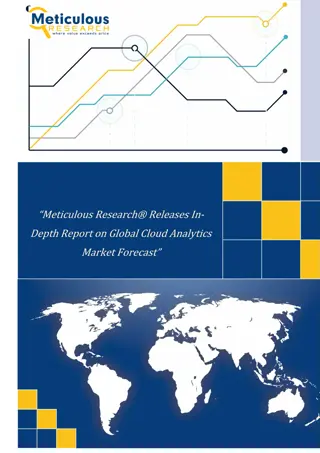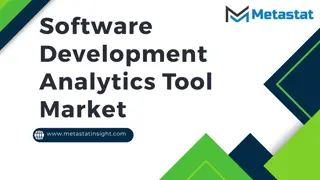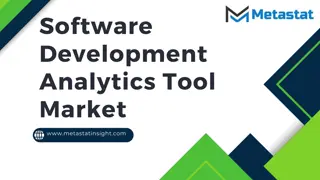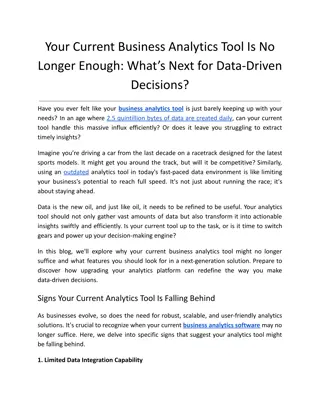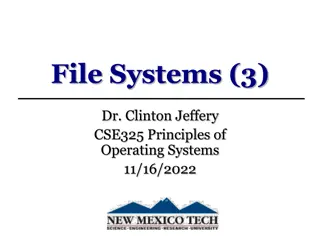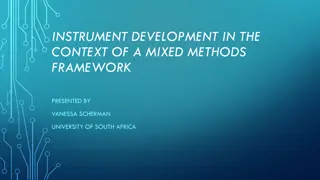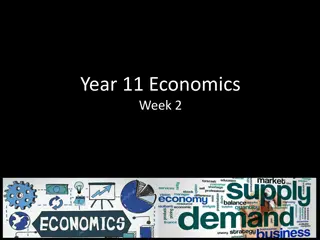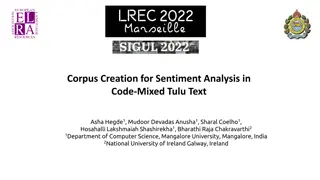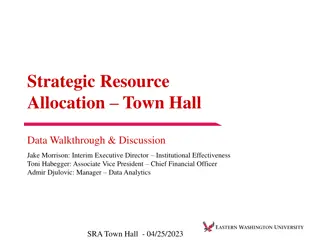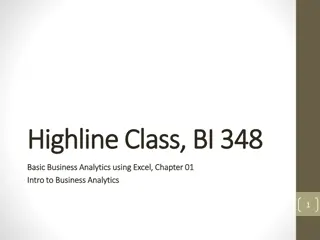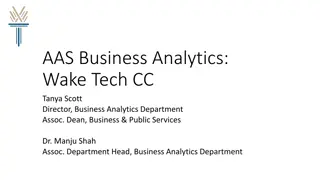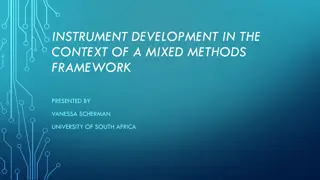Mixed Learning Resource Allocation in Decision Analytics
Explore the concept of mixed learning resource allocation in decision analytics, focusing on scenarios like using drones for oil detection, responding to natural disasters like Hurricane Sandy, and managing information states for optimal decision-making. The discussion also delves into the development of lookahead policies and creating approximations for efficient decision models.
Download Presentation

Please find below an Image/Link to download the presentation.
The content on the website is provided AS IS for your information and personal use only. It may not be sold, licensed, or shared on other websites without obtaining consent from the author.If you encounter any issues during the download, it is possible that the publisher has removed the file from their server.
You are allowed to download the files provided on this website for personal or commercial use, subject to the condition that they are used lawfully. All files are the property of their respective owners.
The content on the website is provided AS IS for your information and personal use only. It may not be sold, licensed, or shared on other websites without obtaining consent from the author.
E N D
Presentation Transcript
A Unified Framework for Sequential Decision Analytics Olin Business School University of Washington, St. Louis November 5-6, 2019 Warren B. Powell Princeton University Department of Operations Research and Financial Engineering
Mixed learning/resource allocation problems
Mixed learning/resource allocation Sensing Drones fly over the ocean to detect the presence of oil. Communication Drones coordinate by sharing information. Mitigation Information from drones can be used to guide surface vehicles performing cleanup.
Mixed learning/resource allocation Hurricane Sandy Once in 100 years? Rare convergence of events But, meteorologists did an amazing job of forecasting the storm. The power grid Loss of power creates cascading failures (lack of fuel, inability to pump water) How to plan? How to react?
Mixed learning/resource allocation 0.5 call 0.503 Information state ??= phone calls, weather information, flooding, X 0.503 0.503 0.503 0.503 0.503 X 0.76 0.54 0.54 call 0.064 0.064 0.064 0.064 Physical state ??= location of vehicle 0.603 0.603 call 0.05 X 0 0.04 0.02 0.502 0.502 0 0 0.04 0.502 0.03 0.502 0.502 0.05 X 0.67 0.67 0.05 call 0.6 0.26 0.78 0.6 0.38 X X call call Slide 5 call
Mixed learning/resource allocation 0.5 0.503 call Information state ??= phone calls, weather information, flooding, X 0.503 0.503 0.503 0.503 0.503 Belief state ??= probability of outage X 0.76 0.54 0.54 call 0.064 0.064 0.064 0.064 Physical state ??= location of vehicle 0.603 0.603 call 0.05 X 0 0.04 0.02 0.502 0.502 0 0 0.04 0.502 0.03 0.502 0.502 0.05 X 0.67 0.67 0.05 call 0.6 0.6 0.26 0.78 0.38 X X call call Slide 6 call
Mixed learning/resource allocation The ultimate lookahead policy is optimal = + T t * t ( ) S argmax ( , ) t C S x E max E ( , ( ))| | , X C S X S S S x + ' ' ' 1 t x t t t t t t t = + t ' 1 t Instead, we have to create an approximation called the lookahead model: ( , 1 , 1 , 1 , , , , , t t t t t t t t S x W S x W + + + ) ,...., , , ,... S x W + + , 2 ' ' , ' 1 t t t t tt tt A lookahead policy works by solving the lookahead model: t H + = + DLA t ( ) S argmax ( , ) t C S x E max E ( , ( ))| | , X C S X S S S x + ' ' ' , 1 t x t tt tt tt t t t t t = + ' 1 t t Slide 7
Mixed learning/resource allocation To design a stochastic lookahead policy, we have to find a policy within our lookahead policy: = + t H + DLA t ( ) S argmax ( , ) t C S x E max E ( , ( ))| | , X C S X S S S x + ' ' ' , 1 t x t tt tt tt t t t t t = + ' 1 t t For active learning problems, we need a stochastic lookahead to capture that if the truck traverses a link, it might see a tree down. This means that to find a policy for our stochastic optimization problem, we have to solve a stochastic optimization problem. We used Monte Carlo tree search, but this is an umbrella for a wide range of methods. If we choose, we can create a lookahead model that ignores active learning. Slide 8
Decision Outcome Decision Outcome Decision Slide 9
Mixed learning/resource allocation Monte Carlo tree search: Selection Expansion Simulation Backpropagation Action selection Sampling Rollout policy Tree policy (a) (b) (c) (d) C. Browne, E. Powley, D. Whitehouse, S. Lucas, P. I. Cowling, P. Rohlfshagen, S. Tavener, D. Perez, S. Samothrakis and S. Colton, A survey of Monte Carlo tree search methods, IEEE Transactions on Computational Intelligence and AI in Games, vol. 4, no. 1, pp. 1 49, March 2012. Slide 10
Mixed learning/resource allocation Advantages of MCTS Insensitive to complex state variables No problem handling high dimensional belief states. Disadvantages Computationally expensive Updating of belief states within MCTS tree can, in particular, be expensive. Classical MCTS cannot handle large action spaces (e.g. vector-valued decisions) MCTS also struggles with longer horizons Slide 11
Mixed learning/resource allocation We can then simulate this lookahead policy over time: The lookahead model . . . . t + t + The base model t + t 1 2 3 Slide 13
Mixed learning/resource allocation We can then simulate this lookahead policy over time: The lookahead model . . . . t + t + The base model t + t 1 2 3 Slide 14
Mixed learning/resource allocation We can then simulate this lookahead policy over time: The lookahead model . . . . t + t + The base model t + t 1 2 3 Slide 15
Mixed learning/resource allocation We can then simulate this lookahead policy over time: The lookahead model . . . . t + t + The base model t + t 1 2 3 Slide 16
Mixed learning/resource allocation 0.5 0.503 call Information state ??= phone calls, weather information, flooding, X 0.503 0.503 0.503 0.503 0.503 Belief state ??= probability of outage X 0.76 0.54 0.54 call 0.064 0.064 0.064 0.064 Physical state ??= location of vehicle 0.603 0.603 call 0.05 X 0 0.04 0.02 0.502 0.502 0 0 0.04 0.502 0.03 0.502 0.502 0.05 X 0.67 0.67 0.05 call 0.6 0.6 0.26 0.78 0.38 X X call call Slide 17 call
Mixed learning/resource allocation 0.5 call 0.503 X 0.503 0.503 0.503 0.503 0.503 X 0.76 0.54 0.54 call 0.0604 0.0604 0.0604 0.0604 0.62 0.62 call 0.08 X 0 0.51 0.05 60.056 0.51 0.032 0 0 0 0.048 0.51 0.51 0.08 X 0 0.99 0.08 call 0.0 0.0 0.0 0.0 0.0 X X call call Slide 18 call
Mixed learning/resource allocation 0.5 call 0.503 X 0.503 0.503 0.503 0.503 0.503 X 0.76 0.54 0.54 call 0.06 0.06 0.06 0.06 0 0 call 0.0 X 0 0.0 0 0 0.0 0 0 0.0 0 0.0 0 0 0.0 X 0 0 0.0 call 0.0 0.0 0.0 0.0 0.0 X X call call Slide 19 call
Mixed learning/resource allocation 1 percent call-in 10 percent call-in 100 percent call-in Perfect information: Lookahead budget Slide 20
Mixed learning/resource allocation Comparison to industrial escalation heuristic : Escalation algorithm 55110 Lookahead policy 36150 Slide 21
Mixed learning/resource allocation MCTS enjoys the property of asymptotic optimality, but there are two ways of achieving this: Pessimistic MCTS this is the standard strategy of using a heuristic to approximate the downstream value of states. Involves testing every action. Optimistic MCTS (Jiang, al-Kanj and Powell, 2019) Use a sampled future, then optimize over the future to obtain an optimistic estimate (this is a form of information relaxation). No longer requires testing every action, but Computationally more expensive per iteration. Slide 22
Mixed learning/resource allocation Pessimistic MCTS No. times visited node ?? log N s x ( ) N s ( ) = + + argmax ( , ) t C s x ( ) x V s t + + 1 1 t x t t ( , ) t Downstream value No. times tested action ? from ?? The bonus term forces exploration of every action infinitely often. This can be problematic if the number of actions is large. ( ) V s + + 1 1 t t Slide 23
Mixed learning/resource allocation From pessimistic to optimistic MCTS Pessimistic MCTS Optimistic MCTS Deterministic math program Slide 24
Mixed learning/resource allocation Features No longer requires that we visit every action infinitely often. This means that it can scale to vector-valued decision variables! (This is a first for MCTS) Limitations Solving the lookahead steps is much more expensive. Value of optimistic over pessimistic MCTS depends on the number of actions per node, and the performance of the rollout policy for pessimistic MCTS (this might be quite good!). Slide 25
Mixed learning/resource allocation MCTS vs number of actions Optimistic MCTS with and without dual optimization Pessimistic MCTS Pct. Improvement over default policy Optimistic MCTS with dual optimization Optimistic MCTS without dual optimization Pessimistic MCTS Average number of actions per node Slide 26
Mixed learning/resource allocation Other examples: Budget constrained bidding for ad-clicks Optimize ad-clicks within a budget constraint Clinical trials Optimize decisions of stop and cancel, stop and go to market, or continue while learning the efficacy of a drug within the budget. Laboratory experiments with machine setups Determine what experiment to run next, but equipment setups and inventory mean that the time/cost of an experiment depends on the previous experiment. For each case, modeling framework, and four classes of policies, are the same. However, the conditions may impact the choice of the best policy. Slide 27





